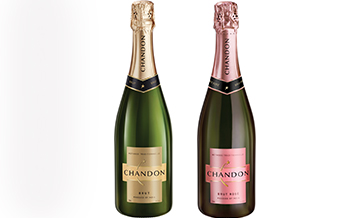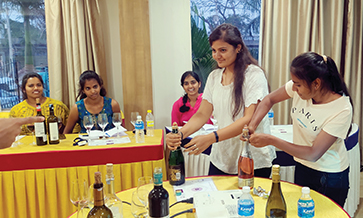The most important thing to bear in mind is that Indian wine producers are still not confident of our terroir. When we make wines we try and copy wines that Europe or North America has already done. There is no wine that we can blind-taste and say that this is a classic representation of our soil or our climate.
Our wines are being made in competition with something from Europe or North America. Therefore, a lot of our wines taste like what you get in Napa or Europe. We do not have a wine that is uniquely Indian.
We have this mindset that we are not good enough; so Indian wines are not taking their rightful place on the table. I look forward to the day when Europeans will say, ‘I want my wine to taste like a Nashik wine, or a wine from Lonavala’!
If you go to Portugal you will not see a Cabernet Sauvignon being promoted there. Instead it will be a Touriga Nacional. I want that to happen in India. Why don’t we promote our own unique wines which have distinct Indian flavour and characteristics?
Advantage India
Over the 8 years that we have been in business, we have noticed that our consumers are better educated than they were earlier – not to the extent as in the West though. Wines made in India have also improved considerably; and I can vouch that some of our wineries are on par with the best in the world.
Indian wines are at an advantage as they are produced locally and don’t move around as much. But our pricing system seems flawed – we are all tagging them in relation to imported wines. Remember that the price of foreign wines includes import duties and other mark-ups.
If you go to a restaurant in France you can order a glass of top-class Champagne for up to 10 Euros, while in India, even for low-end Champagne, we are paying the equivalent of 25 Euros! Low-end Champagne in India costs around 100 Euros in retail, while in France it sells for only 35 Euros.
Domestic producers – at least the good players – should sell their wines cheaper so that we in the restaurant business can sell them by telling our customers that they are getting a better wine for lower price. We should play on that, rather than pricing it at the same level as imported wines.
Value proposition
So far as awards and international accolades go, honestly they don’t mean much to me. We buy our wines because they are better value for our money. We are paying for better quality, but we need to price the wines lower.
To our wine producers, I would like to say that Indian wines are still focused on the retail market rather than the industrial market. They mass manufacture and display them indiscriminately across all platforms.
Thus, if a consumer sees the product in a retail outlet and then sees it in a restaurant, the latter finds it that much more difficult to sell the product with its mark-ups.
Often times these wines don’t sell in restaurants as much as they should. I feel that wine producers should have a separate line of brands for restaurants and retail.
In my experience, the message of our improved wines is slowly getting across to the consumer. But not all wines are showing an improvement: a vast majority of Indian wines are in the Rs 300 category – we can use them only for cooking.













